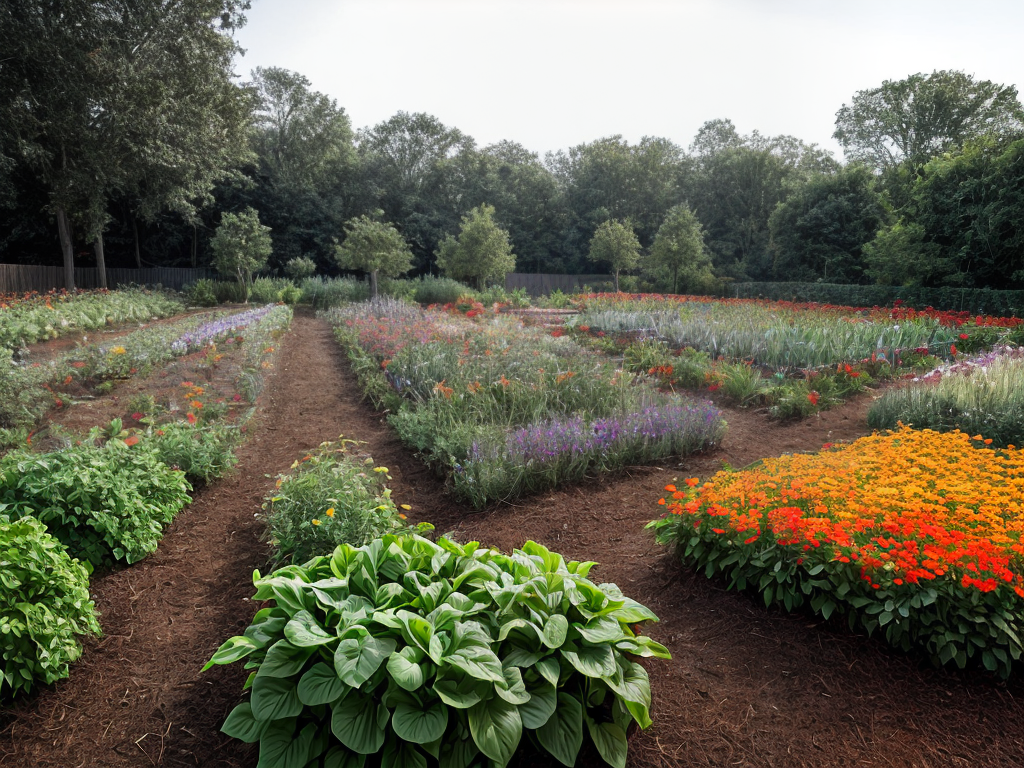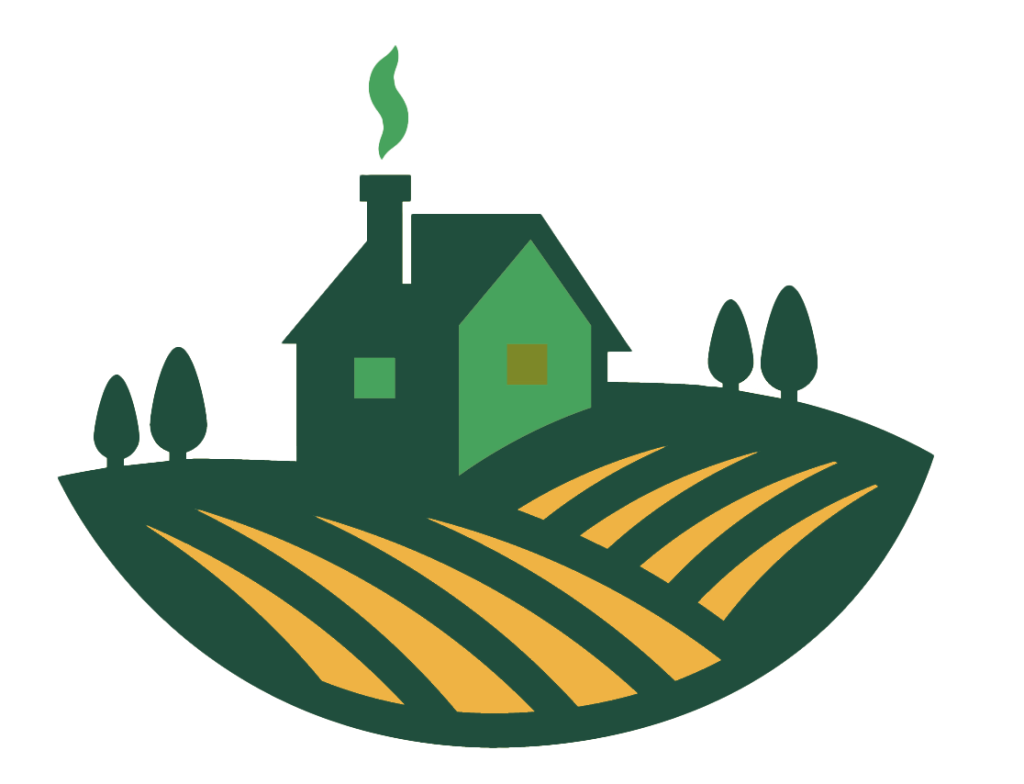
As a passionate organic gardener, I’ve learned that a successful harvest starts with proper crop rotation. So, here are my 10 tips for seasonal crop rotation in organic gardens. By understanding the basics, planning ahead, and grouping crops by families, you can maximize your yields and keep your soil healthy. Remember to rotate crops based on nutrient needs, consider pest and disease resistance, and implement succession planting. With these tips, you’ll have a thriving garden all year round.
Understand the Basics
In this article, I will explain the basics of seasonal crop rotation in organic gardens. To plan for success in your garden, it’s crucial to understand crop rotation techniques. Crop rotation involves the systematic planting of different crops in a specific order to maximize soil fertility and minimize pest and disease problems. The main goal is to prevent the buildup of pests and diseases that target specific crops. By rotating crops, you disrupt the life cycles of these pests and diseases, reducing their impact on your garden. Additionally, crop rotation helps improve soil health by balancing nutrient levels and reducing the risk of nutrient depletion. It’s important to create a crop rotation plan that takes into account the specific needs of your plants and the unique characteristics of your garden.
Plan Ahead
To ensure a successful crop rotation in your organic garden, it is crucial to plan ahead and consider the specific needs of your plants and the unique characteristics of your garden. Here are some effective rotation strategies to help you plan ahead:
- Crop selection: Determine which crops you want to grow and research their specific requirements for soil type, sunlight, and water. This will help you determine the best rotation sequence for your garden.
- Mapping your garden: Create a detailed map of your garden, including the location of each crop bed. This will allow you to visualize and plan your crop rotation sequence more effectively.
- Keeping track: Keep a record of the crops you’ve grown in each bed and any issues or successes you’ve encountered. This will help you track the success of your rotation strategies and make adjustments for future seasons.
Group Crops by Families
When it comes to crop rotation in organic gardens, grouping crops by families is an important strategy to consider. By planting crops from the same family together, you can take advantage of their shared characteristics and needs. This not only simplifies maintenance and care, but it also helps prevent the buildup of pests and diseases specific to certain plant families.
Crop Family Benefits
Grouping crops by their families offers numerous benefits in organic gardens. By planting crops from the same family together, you can implement effective crop rotation techniques and enhance organic pest control. Here are three ways that grouping crops by families can benefit your garden:
- Disease Prevention: Planting crops from the same family in the same area can help prevent the spread of diseases. Many diseases are specific to certain plant families, so by grouping crops together, you can contain and manage potential outbreaks more efficiently.
- Soil Health: Different plant families have different nutrient needs and interactions with the soil. By grouping crops by families, you can optimize the soil health by providing the right nutrients and avoiding nutrient depletion.
- Pest Control: Certain pests are attracted to specific plant families. By grouping crops from the same family, you can better control and manage pests, reducing the need for chemical interventions.
Effective Rotation Strategies
By grouping crops from the same family together, I can effectively implement rotation strategies in my organic garden. Effective rotation strategies involve grouping crops that belong to the same family and rotating them in different areas of the garden each year. This strategy helps to break the life cycles of pests and diseases that specifically target certain crop families. By rotating crops, I can minimize the build-up of pests and diseases in the soil, reducing the need for chemical interventions. Additionally, grouping crops by families allows me to take advantage of the benefits that certain families offer. For example, legumes, such as peas and beans, are known for their ability to fix nitrogen in the soil, benefiting other crops that follow in the rotation. Overall, grouping crops by families and implementing effective rotation strategies improves the health and productivity of my organic garden.
Rotate Crops Based on Nutrient Needs
I rotate crops in my organic garden based on their nutrient needs to maintain soil health and optimize plant growth. Here are three crop rotation techniques I use to ensure that my plants receive the nutrients they need:
- Nitrogen fixers: I plant legumes like beans and peas in one area for a season. These crops have the ability to fix nitrogen from the atmosphere and enrich the soil with this essential nutrient.
- Heavy feeders: I rotate crops that require lots of nutrients, such as corn and tomatoes, to different areas each year. This prevents nutrient depletion in the soil and reduces the risk of pest and disease buildup.
- Cover crops: I grow cover crops like clover and buckwheat during fallow periods or between crop rotations. These cover crops help to suppress weeds, improve soil structure, and add organic matter, which enhances nutrient availability for future crops.
Consider Pest and Disease Resistance
Considering pest and disease resistance is crucial when planning crop rotation in your organic garden. By rotating crops, you can disrupt the life cycle of pests and reduce the risk of disease buildup in the soil. Choose plant varieties that have natural resistance to common pests and diseases in your area, and avoid planting the same crop in the same location for consecutive seasons to minimize the risk of infestations and infections.
Crop Rotation Benefits
How can crop rotation benefit organic gardens in terms of pest and disease resistance? Crop rotation is a valuable technique that can help organic gardeners effectively manage pests and diseases. Here are three ways in which crop rotation can provide these benefits:
-
Breaks the pest and disease cycle: By rotating crops, you can disrupt the life cycle of pests and diseases. Different crops have varying susceptibility to specific pests and diseases, so by rotating crops, you can prevent the buildup of pests and diseases that target a particular crop.
-
Reduces pest and disease pressure: Crop rotation helps to minimize the prevalence of pests and diseases in your garden. When you rotate crops, you introduce different plants that are less susceptible to the pests and diseases that may have affected the previous crop, reducing the overall pressure on your plants.
-
Enhances soil health and resilience: By rotating crops, you can improve the health and fertility of your soil. This leads to stronger, more resilient plants that are better able to withstand pest and disease attacks.
Crop rotation is a simple yet effective strategy that can greatly contribute to the pest and disease resistance of your organic garden. By implementing crop rotation techniques and overcoming crop rotation challenges, you can create a more balanced and healthy garden ecosystem.
Plant Disease Prevention
Implementing crop rotation techniques and considering pest and disease resistance is essential for effective plant disease prevention in organic gardens. Crop rotation involves the systematic planting of different crops in a specific order to disrupt the life cycles of pests and diseases. This practice helps to prevent the buildup of pathogens and pests that can damage plants. By rotating crops, you can reduce the likelihood of diseases spreading from one season to the next. Additionally, selecting plants with natural resistance to pests and diseases can further enhance plant health. It is important to choose varieties that are known to be resistant to common pests and diseases in your region. This, combined with organic pest control methods, such as using beneficial insects and practicing good garden hygiene, can greatly minimize the risk of plant diseases in your organic garden.
Use Cover Crops
To improve soil health and prevent erosion, I incorporate cover crops into my organic garden using a mix of legumes and grasses. Cover crops offer numerous benefits for organic gardens, including:
- Soil improvement: Cover crops help to increase organic matter, enhance soil structure, and promote nutrient cycling.
- Weed suppression: Thick cover crop growth can outcompete weeds, reducing the need for herbicides.
- Nutrient retention: Cover crops absorb excess nutrients, preventing them from leaching into groundwater.
When selecting cover crops, it’s important to consider factors such as climate, soil type, and intended purpose. Legumes, like clover and vetch, fix nitrogen in the soil, while grasses, such as rye and barley, provide ground cover and prevent erosion. By carefully selecting and incorporating cover crops into my organic garden, I am able to maintain soil health and promote the overall success of my crops.
Implement Succession Planting
One key strategy I use for seasonal crop rotation in my organic garden is planting crops in succession. Succession planting involves planting different crops in the same space one after another, allowing me to maximize my garden space and increase my overall yield. This method offers several benefits. Firstly, it extends the growing season by staggering the maturity dates of crops, ensuring a continuous harvest. Secondly, it helps to prevent the spread of pests and diseases that can affect a single crop. Lastly, succession planting allows me to make the most of limited space by utilizing areas that would otherwise be empty between plantings. By implementing succession planting in my organic garden, I am able to optimize my harvest and make the most efficient use of my available space.
Pay Attention to Planting Dates
I pay close attention to planting dates to ensure the success of my seasonal crop rotation in my organic garden. Proper timing is crucial for maximizing yields and preventing pest and disease issues. Here are some planting techniques and considerations I follow:
- Follow the planting calendar: I refer to a planting calendar specific to my region to determine the optimal dates for sowing and transplanting different crops.
- Consider the growing season: Some crops thrive in cool weather, while others prefer warmer conditions. By understanding the seasonal crop selection, I can plan my planting dates accordingly.
- Make use of succession planting: Instead of planting all crops at once, I stagger my plantings to extend the harvest season and ensure a continuous supply of fresh produce.
Monitor Soil Health
To maintain healthy soil in my organic garden, I need to regularly test the nutrient levels. This will help me understand if any specific nutrients are lacking and adjust my fertilization accordingly. By preventing soil nutrient depletion, I can ensure that my crops have the necessary nutrients for optimal growth and productivity.
Testing Soil Nutrient Levels
Regular soil nutrient testing is crucial for monitoring the health of organic gardens. By regularly testing the nutrient levels in the soil, gardeners can ensure that their plants are getting the necessary nutrients for optimal growth. To effectively test soil nutrient levels, there are a few key pieces of testing equipment and soil sampling techniques to keep in mind:
-
Testing Equipment:
-
pH meter: Measures the acidity or alkalinity of the soil.
-
Soil testing kits: Provide a quick and easy way to test for major nutrients like nitrogen, phosphorus, and potassium.
-
Soil moisture meter: Determines the moisture content in the soil.
-
Soil Sampling Techniques:
-
Take multiple samples: Collect soil samples from different areas of the garden to get a representative sample.
-
Dig to the appropriate depth: Dig down about 6-8 inches to gather soil from the root zone.
-
Mix the samples: Thoroughly mix the collected soil samples in a clean bucket before testing.
Regular soil nutrient testing using appropriate equipment and sampling techniques will help organic gardeners ensure that their soil is healthy and provide the necessary nutrients for their plants’ growth.
Preventing Soil Nutrient Depletion
By monitoring soil health, I can prevent nutrient depletion in my organic garden. Soil fertility management is crucial to maintain the nutrient levels necessary for healthy plant growth. Regularly testing the soil for nutrient levels helps me determine if any deficiencies exist and take appropriate actions. If nutrient levels are low, I can use organic fertilizer alternatives to replenish the soil. Organic fertilizers, such as compost, manure, and bone meal, provide essential nutrients in a natural and sustainable way. These alternatives not only enhance soil fertility but also improve soil structure and microbial activity. Additionally, incorporating crop rotation into my gardening practices helps prevent nutrient depletion by reducing the risk of nutrient imbalances and diseases. By monitoring soil health and implementing proper soil fertility management techniques, I can ensure the long-term productivity and health of my organic garden.
Keep a Garden Journal
I find it helpful to maintain a garden journal for effective seasonal crop rotation in my organic garden. Garden record keeping is essential for successful gardening, and documenting important information in a journal can greatly assist with crop rotation planning. Here are three reasons why keeping a garden journal is important:
-
Tracking Planting Dates: By recording the dates when I plant different crops, I can easily refer back to my journal and determine when it’s time to rotate them. This ensures that I don’t plant the same crop in the same area consecutively, which helps prevent disease and pest buildup.
-
Monitoring Growth and Yield: A garden journal allows me to record the growth and yield of each crop. This information helps me assess the performance of different varieties and make informed decisions about future plantings.
-
Identifying Pest and Disease Patterns: By documenting any pest or disease issues I encounter, I can identify patterns and take preventive measures in subsequent seasons. This helps me develop effective organic pest management strategies and maintain the health of my garden.
Keeping a garden journal is a simple yet powerful tool for successful seasonal crop rotation in an organic garden.


